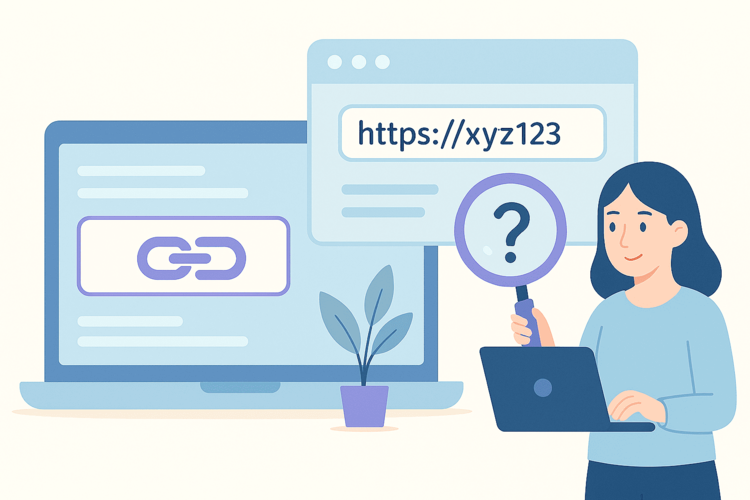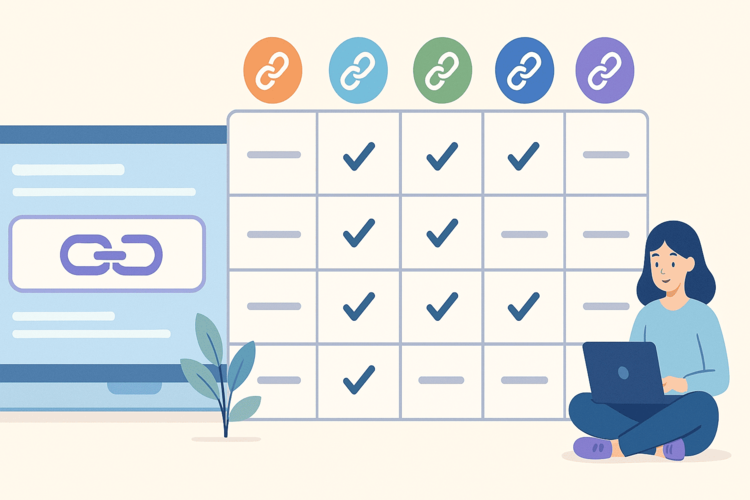What is URL shortening?
URL shortening converts a long web address into a shorter one that redirects the user to the same page. Special shortening services are used to quickly turn long web addresses into short ones. Shortened URLs are used for many reasons, namely:
for social networks, SMS, and printed materials. Short links look more attractive and are easy for users to remember;
to improve the aesthetic appearance, shorter links look neater;
to track the number of clicks on a link, most link shortening services provide click statistics;
to hide the real address, such disguises are used for fraudulent purposes, so you should be careful when clicking on a shortened link.
.png)
URL shortening is a quick process that makes the link more readable and user-friendly. But it also saves space (especially important for websites with character limits, like Twitter). You can create "readable" or branded short links, which are important for business. Shortened links are successfully used for marketing, tracking campaign performance, A/B testing.
Shortening a long address is necessary for marketing:
- creating personalized short links for advertising campaigns;
- offline advertising: short links on posters, billboards (easier to print or remember);
- QR codes: a QR code is usually based on a short link;
- for services that provide technical support to users:
- it is easy to share instructions or files without long, hard-to-remember URLs.
How does a URL Shortener work?
The principle of link shortening is very simple and fast. You enter a long link into a special service, then this service automatically generates a unique short code, a shortened link. The service redirects users to the original address when they follow this short link. URL shortening works based on redirection.
The service that shortened the link stores it in its database, so the shortened link will work for a long period (usually as long as the service itself works).
The link shortening service can also record the number of clicks, the source of traffic (where the user came from), the user's location, time, and date. This data is available to the owner of the short link. It is free to use it for marketing purposes.
The shorter the link, the more convenient, but the more links the service generates, the longer the codes can become (due to the number of unique combinations). User-friendly URL shorteners that create clean and concise links.
Why use URL shortening?
Shortening long URLs is necessary for many online and offline areas. Short URLs provide many advantages in use because they are primarily more convenient and aesthetically appealing.
The compactness of a short link is a rather significant advantage, because long links often look awkward and take up a lot of space. A shortened link is easier to insert into SMS, tweets, signatures, presentations, printed materials, etc. They look better and do not irritate the user, like, for example, long URLs with UTM tags.
Short, clean links are more user-friendly and better perceived.
Such links are clean, professional, and inspire more trust (especially if branded). Short links are visually attractive for social networks, email marketing, blogs, and other areas of use, including offline.
The key advantages of using shortened links are as follows:
Statistics tracking and additional analytics. Special services that shorten long links also provide useful information on the number of clicks, the source of referrals, geolocation data of users, their device, and web browser. This data is primarily useful for marketing, testing advertising campaigns.
Branding links using link shortening services. Some services allow you to create your domain name. For example, you can change the destination address after creating the link (in some services). Set the expiration date, password, and restrictions by country or by the number of views, if necessary.
Short links are easier to embed in QR codes. The shorter the address, the simpler the QR code looks and the easier it is to scan such a code. This is convenient to use for both online QR codes and codes used in offline products.
Integration with automation tools. The shortener API can be connected to CRM, email systems, bots, CMS (for example, WordPress), etc.
Common use cases
Short links are useful for many areas online and offline. But firstly, short aesthetic links will be useful for:
Social networks: Twitter, Instagram, Facebook, and LinkedIn have character limits and the desire to preserve the aesthetics of posts. Inserting a short link under a photo, video, in comments, or in the bio is looks better than a long full link.
Email: the risk that a long link will "break" in the letter is reduced. In addition, tracking clicks on each link (analytics) will be useful.
Advertising campaigns: A/B testing several versions of pages using different links will help to achieve success in an advertising campaign faster. Shortened links help to track the effectiveness of various promotion channels: Facebook, Google Ads, Instagram, etc.
Offline: posters, flyers, billboards, business cards. Long URLs are difficult to remember, and a short link + QR code solves this problem.
QR codes: a short link generates a less complex QR code that is faster to read and takes up less space in the design. This is more convenient and effective than using a long link.
Technical user support, online training: it is better and easier to send instructions to customers with a short link that looks more professional and is even memorable. Teachers can send students shortened links to tests, presentations during the learning process.
Blog analytics: Blog authors track which shortened links are the most clickable. In this case, it is easier to identify more effective content and continue to work for its success.
Bots and automated services: Telegram, Viber, WhatsApp bots often send short links to products, orders, instructions, etc. This is much more convenient and looks more professional.
.png)
Potential risks and disadvantages
The use of shortened links also has its disadvantages and risks. Among them:
Invisible link endpoint (url masking). When using a shortened link, the user does not see the final link before clicking, he sees only the shortened version. Therefore, scammers often mask the link by using this method of masking viruses and phishing, fake website pages, and malicious files. To check shortened links before clicking, there are special services for identifying fraudulent urls.
Blocking or filtering shortened links. Some platforms, email services, or antiviruses may automatically block or flag short URLs as suspicious.
Dependence on a third-party service. If the service stops working or crashes, all the short links you created will stop working. There have been cases in the past when well-known link shortening services were shut down (for example, Google URL Shortener stopped working in 2019).
Limited control (in some free services). Not all link shortening services provide functionality for managing short URLs. For example, you cannot change the address after creating a short link, analytics capabilities are very limited, and there are no guarantees that user data will be kept private.
Legal or ethical liability. If you distribute a shortened link that leads to a fraudulent or prohibited website, the person who distributed it may also be liable.
A Brief History and Evolution of URL Shortening
In the early years of the Internet, URLs were short, but with the development of dynamic parameters and URL analytics, they began to become long. Therefore, there was a need to shorten links, make long URLs shorter and more attractive to network users.
In 2002, the first mass link shortener TinyURL appeared. It was quite simple, but it still works.
In 2008–2012, there was a boom in social networks. With the advent of Twitter (140-character limit), the need for short links grew rapidly. Therefore, new services began to appear for shortening long links, for example, bit.ly in 2008, goo.gl (from Google), t.co (Twitter). Companies began to use their domains to create branded short links.
In 2012–2017, services for shortening long links began to offer additional functionality for users. For example, real-time click tracking, geo-analytics, UTM tags, and branded links. These years also marked the beginning of the use of APIs for automatic link creation.
In 2018–2020, there was a certain decline in the popularity of link shortening services. Google closed goo.gl in 2019 due to low demand among ordinary users and the spread of fraud. Complaints about malicious short links have become more frequent.
Today, link shortening services are already primarily concerned about user safety and try to give them the widest possible functionality for work. Today, URL shortening is a significant marketing tool, part of business analytics, and an important function for any online and even offline area.
What is the future of link shorteners? This is primarily AI-optimization of links (selection of the most effective URLs using artificial intelligence); integration with smart QR codes, in-depth analytics with user behavior prediction, and further expansion of functionality, which will significantly simplify work on the network.
Conclusion
Shortening long URLs is a simple but extremely powerful tool that greatly facilitates the distribution of information on the Internet. From ease of use in social networks to the possibilities of analytics, branding, and automation, short links have become an integral part of modern Internet marketing, communications, and technical support for customers. Despite the obvious advantages, it is worth remembering about potential risks - security threats and dependence on third-party services. Therefore, you should use abbreviations wisely: choose only proven link shortening services. Shortened URLs are not only convenient but also a strategic marketing tool that, when used correctly, can significantly increase the efficiency of the user's work.




